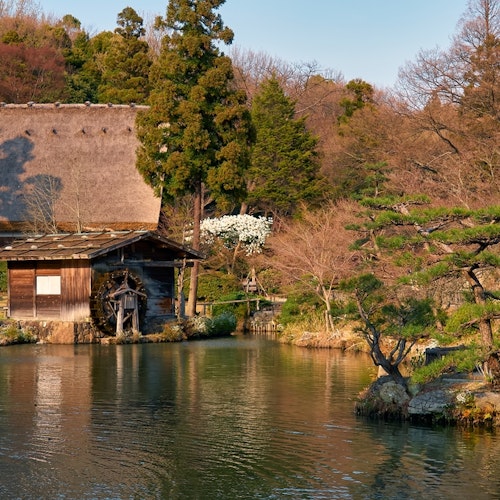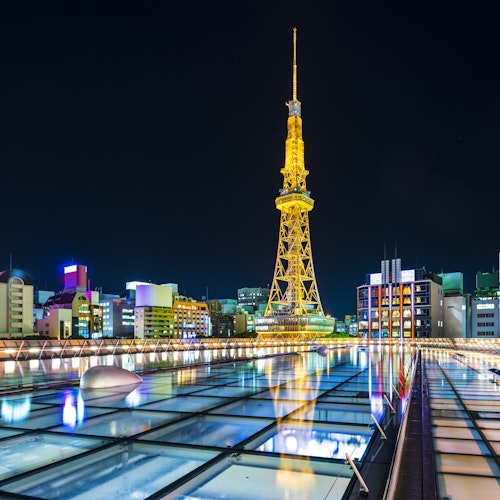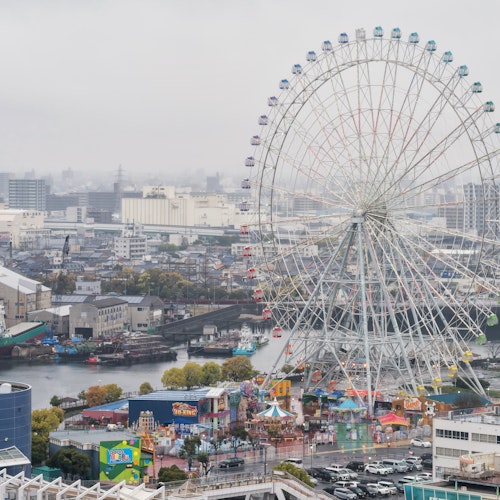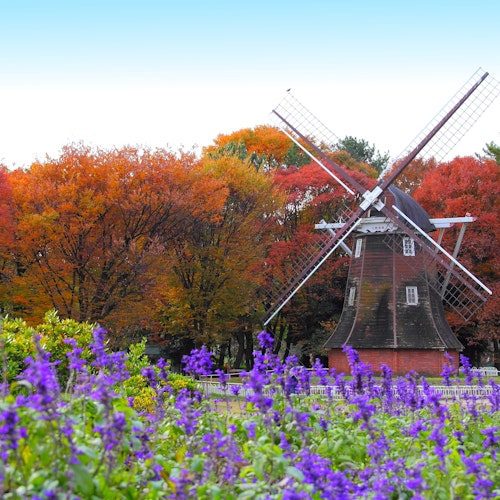
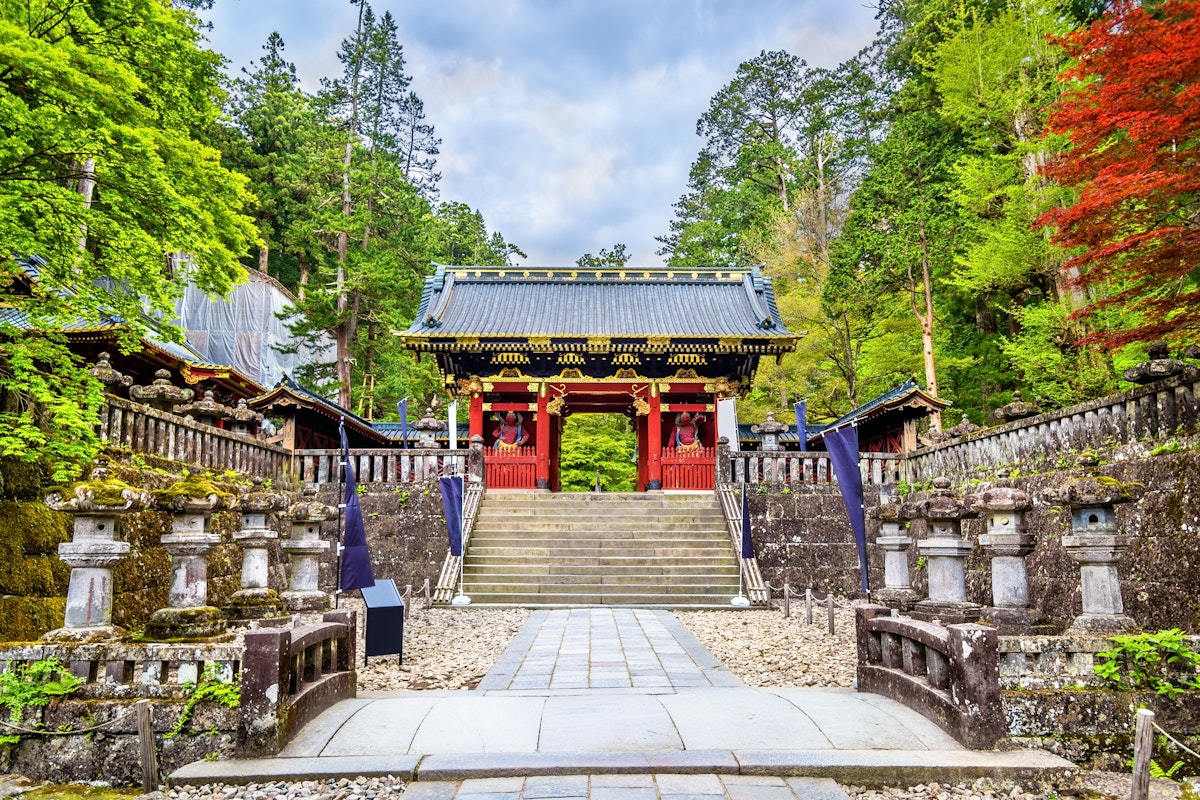
Tokyo's incredible train network opens doors to countless adventures just beyond the metropolitan area. Whether you're craving ancient temples, seaside escapes, or mountain retreats, these accessible day trips prove you don't need to venture far from Japan's capital to discover something extraordinary.
Each destination on this list is reachable within an hour by train, making them perfect for travelers who want to maximize their time while minimizing travel fatigue.
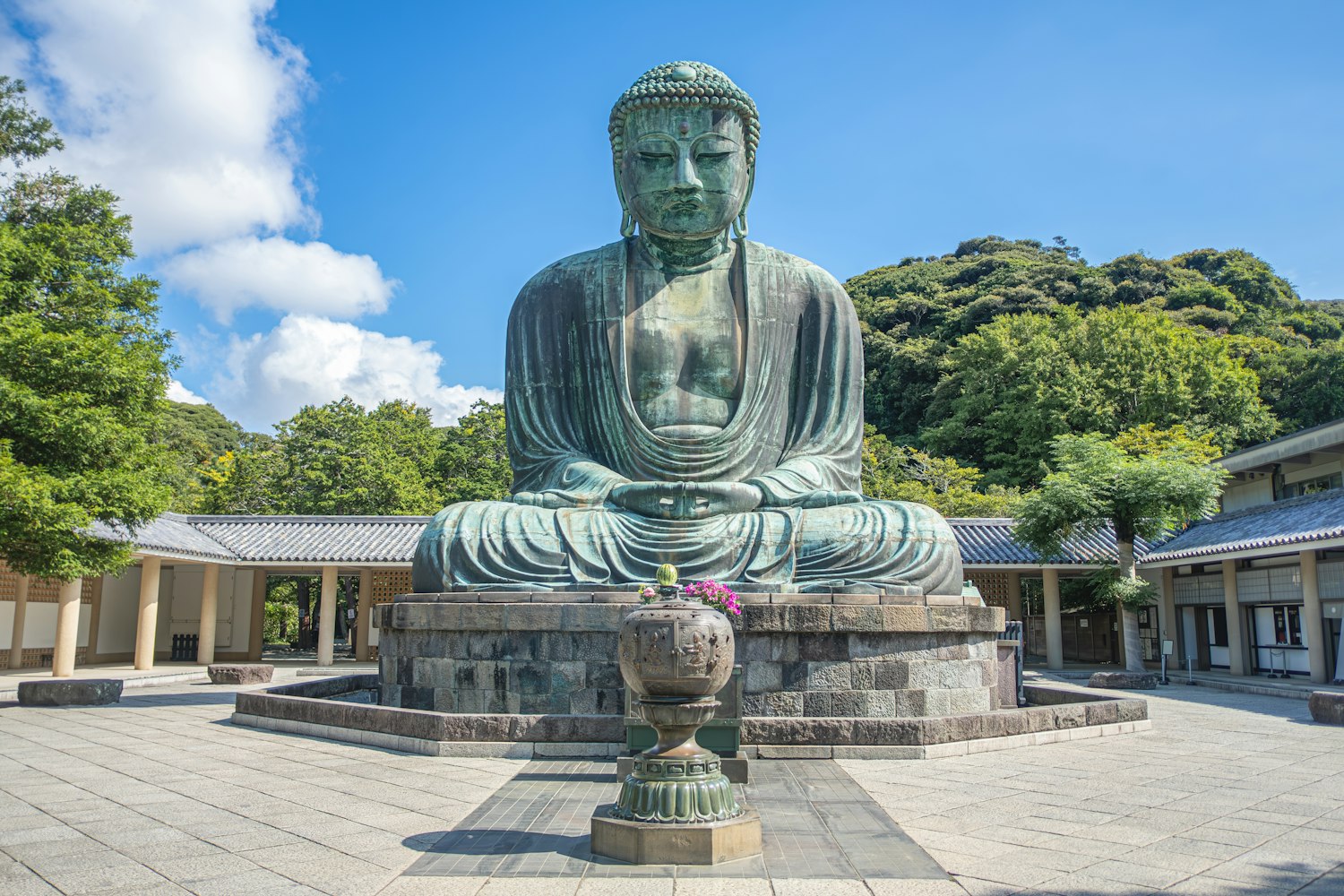
Travel Time: 50-60 minutes from Tokyo Station
Best Train Route: JR Tokaido Line to Fujisawa, transfer to JR Tokaido Main Line to Kamakura
Cost: ¥450-580 one way
Kamakura served as Japan's political center from 1185 to 1333, and today this coastal city seamlessly blends historical significance with natural beauty. The crown jewel is the Great Buddha (Daibutsu), a 13.35-meter bronze statue that has weathered centuries at Kotoku-in Temple. Unlike many indoor Buddha statues, this outdoor monument allows visitors to appreciate its massive scale against the sky.
The bamboo groves surrounding Hokoku-ji Temple create an otherworldly atmosphere perfect for contemplation. Walking through these towering green corridors feels like entering a natural cathedral. For panoramic views, hike up to Sasuke Inari Shrine, where hundreds of red torii gates create a striking pathway up the mountainside.
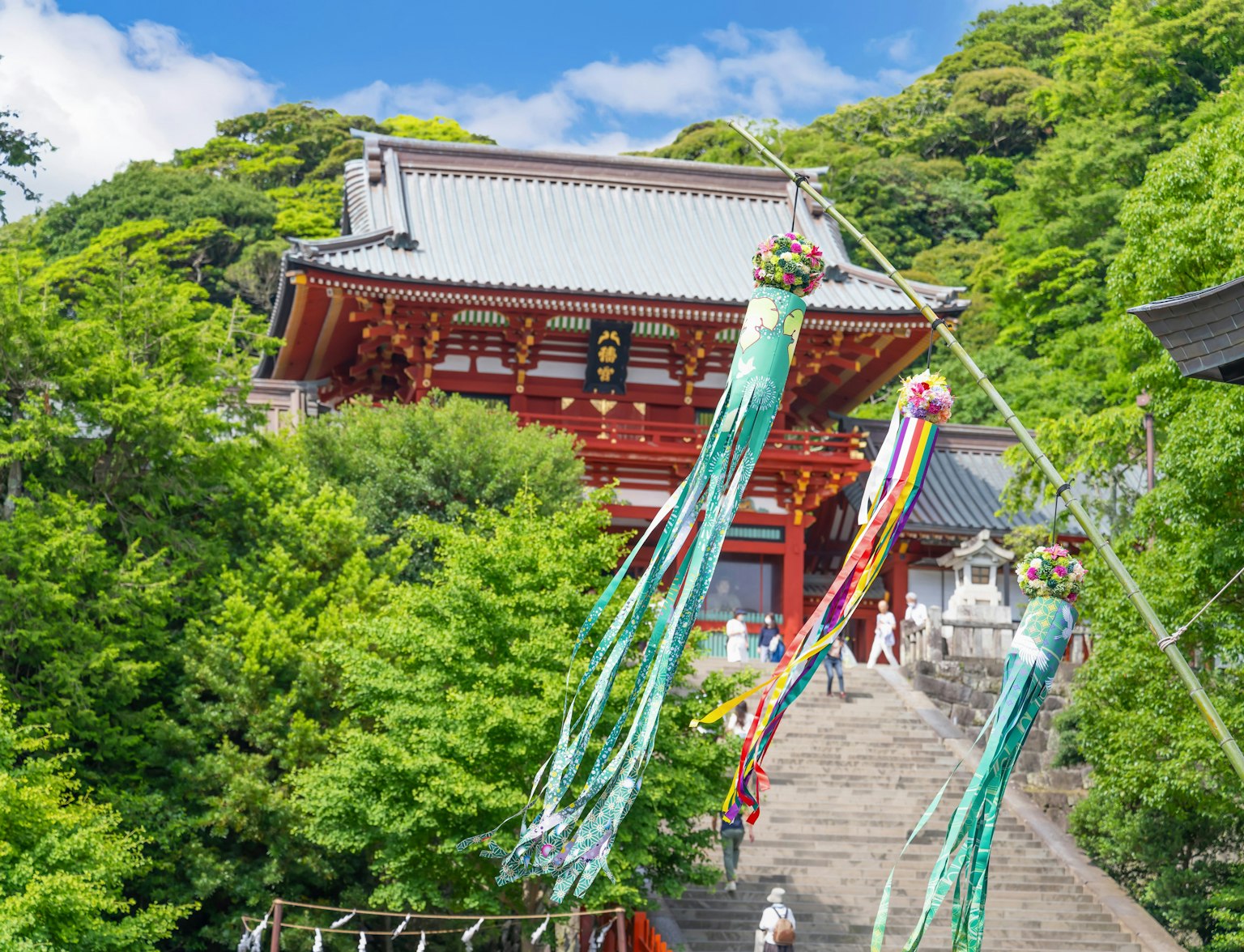
Experience the magic of Kamakura with our professional photographer.
Kamakura's beaches provide a refreshing contrast to Tokyo's urban environment. Yuigahama Beach attracts both locals and tourists, especially during the summer months. The nearby Komachi-dori shopping street offers traditional crafts, local sweets, and the famous Kamakura beer to fuel your explorations.
If you're planning to visit, check out this one-day Kamakura itinerary from Tokyo for a step-by-step guide to temples, coastal walks, and cultural highlights.

Travel Time: 2 hours from Tokyo (Asakusa Station)
Best Train Route: Tobu Nikko Line Limited Express from Asakusa
Cost: ¥1,360 + Limited Express fee
While technically just over our one-hour guideline, Nikko's UNESCO World Heritage sites justify the extra travel time. This mountain town houses some of Japan's most ornate religious architecture, set against a backdrop of pristine nature.
Toshogu Shrine complex serves as the final resting place of Tokugawa shogun Ieyasu, featuring incredibly detailed wood carvings and gold leaf decorations. The famous "see no evil, hear no evil, speak no evil" monkey carving originated here. During autumn, the surrounding mountains explode in brilliant reds and yellows, creating one of Japan's premier fall foliage destinations.
Lake Chuzenji and Kegon Falls offer natural beauty year-round. The 97-meter waterfall is particularly spectacular when partially frozen during winter months. Hot springs (onsen) throughout the area provide perfect relaxation after a day of temple-hopping and nature walks.
To make the most of your time, follow this detailed Tokyo to Nikko day trip itinerary, covering historic shrines, scenic nature spots, and local food stops—all in one unforgettable day.
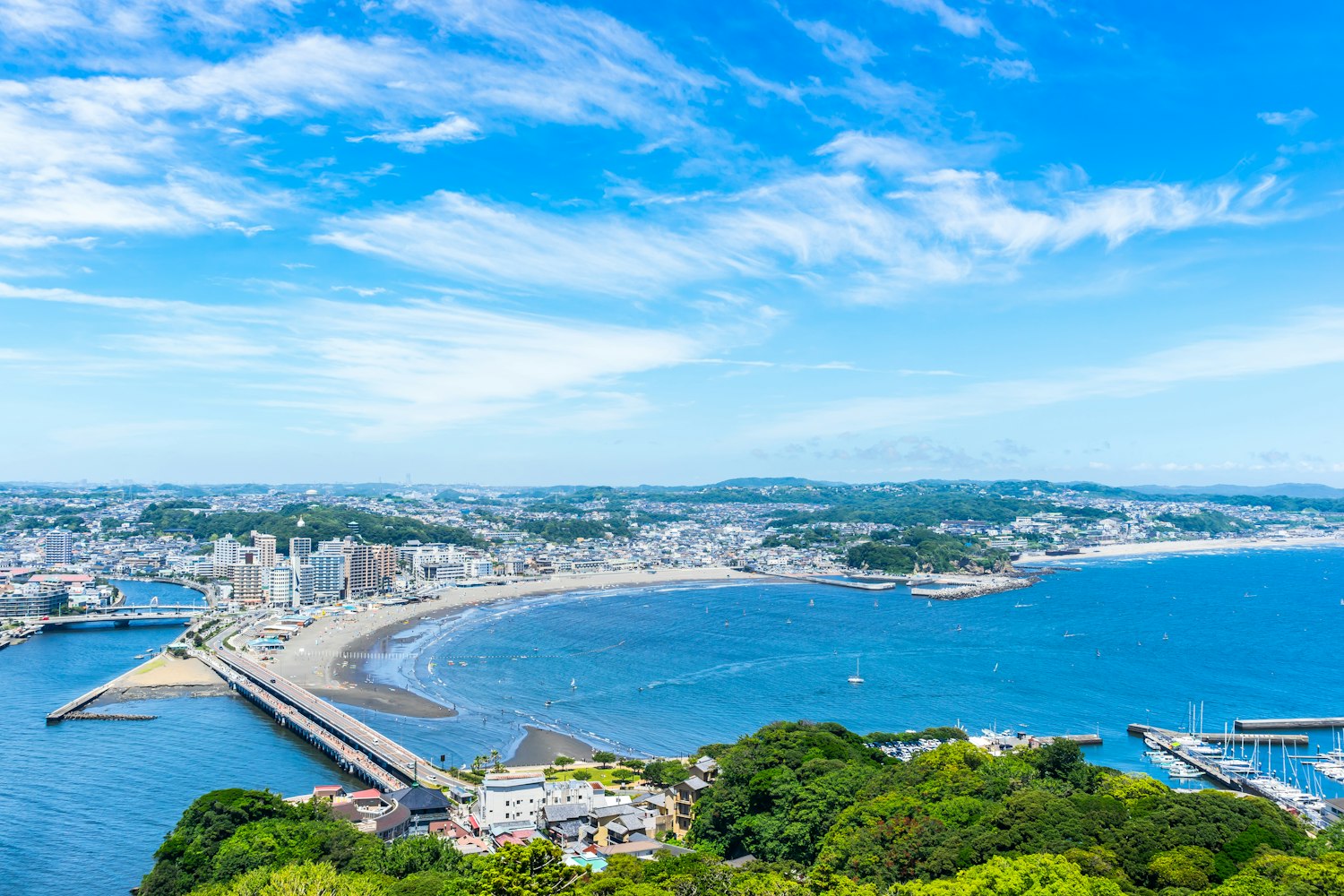
Travel Time: 55 minutes from Shinjuku
Best Train Route: Odakyu Enoshima Line to Katase-Enoshima Station
Cost: ¥310 one way
This small tidal island connected to the mainland by a bridge offers an unexpected mix of traditional shrines, modern attractions, and stunning ocean views. Enoshima Shrine, spread across three separate buildings on the island's heights, provides spiritual significance alongside panoramic Sagami Bay vistas.
The island gained modern fame through anime and pop culture references, attracting younger visitors who blend seamlessly with traditional pilgrims. Samuel Cocking Garden features seasonal illuminations that transform the landscape into a glittering wonderland, particularly beautiful during winter evening visits.
Adventure seekers can explore the Dragon Love Bell, where couples attach padlocks as symbols of eternal love, or venture into the island's mysterious caves. The Iwaya Caves, carved by thousands of years of wave action, house Buddhist statues and offer cool respite during hot summer days.
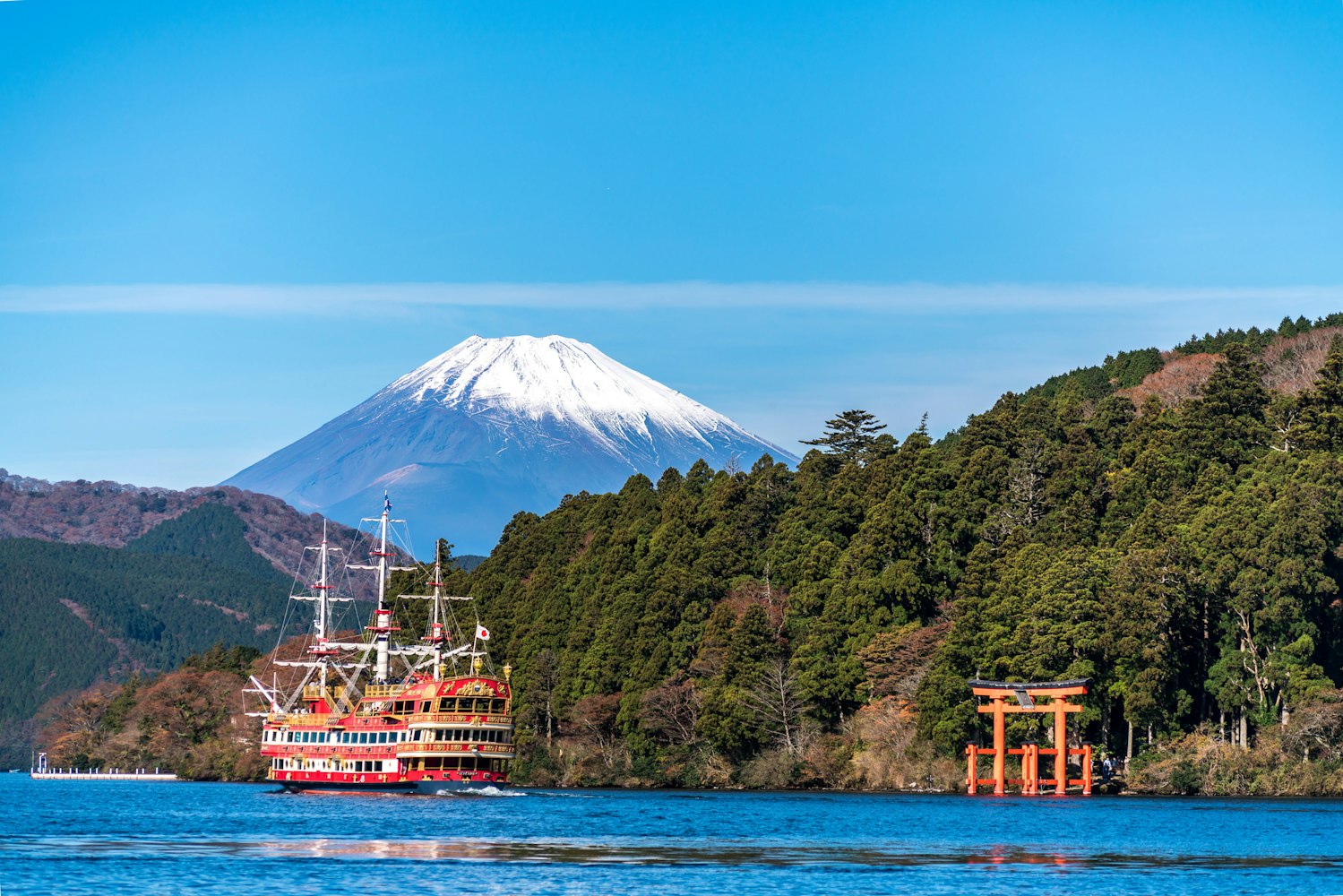
Travel Time: 85 minutes from Shinjuku
Best Train Route: Odakyu Romance Car to Hakone-Yumoto
Cost: ¥1,190 + Romance Car surcharge
Hakone represents Japan's onsen (hot spring) culture at its finest. This mountainous region offers the perfect combination of natural hot springs, art museums, and on clear days, spectacular Mount Fuji views. The journey itself aboard the Romance Car provides comfort and scenic mountain vistas.
Lake Ashi, formed by volcanic activity thousands of years ago, serves as Hakone's centerpiece. Pirate ship cruises across the lake provide unique perspectives of the surrounding mountains and occasional Fuji glimpses. The iconic red torii gate of Hakone Shrine appears to float on the water during high tide, creating one of Japan's most photographed scenes.
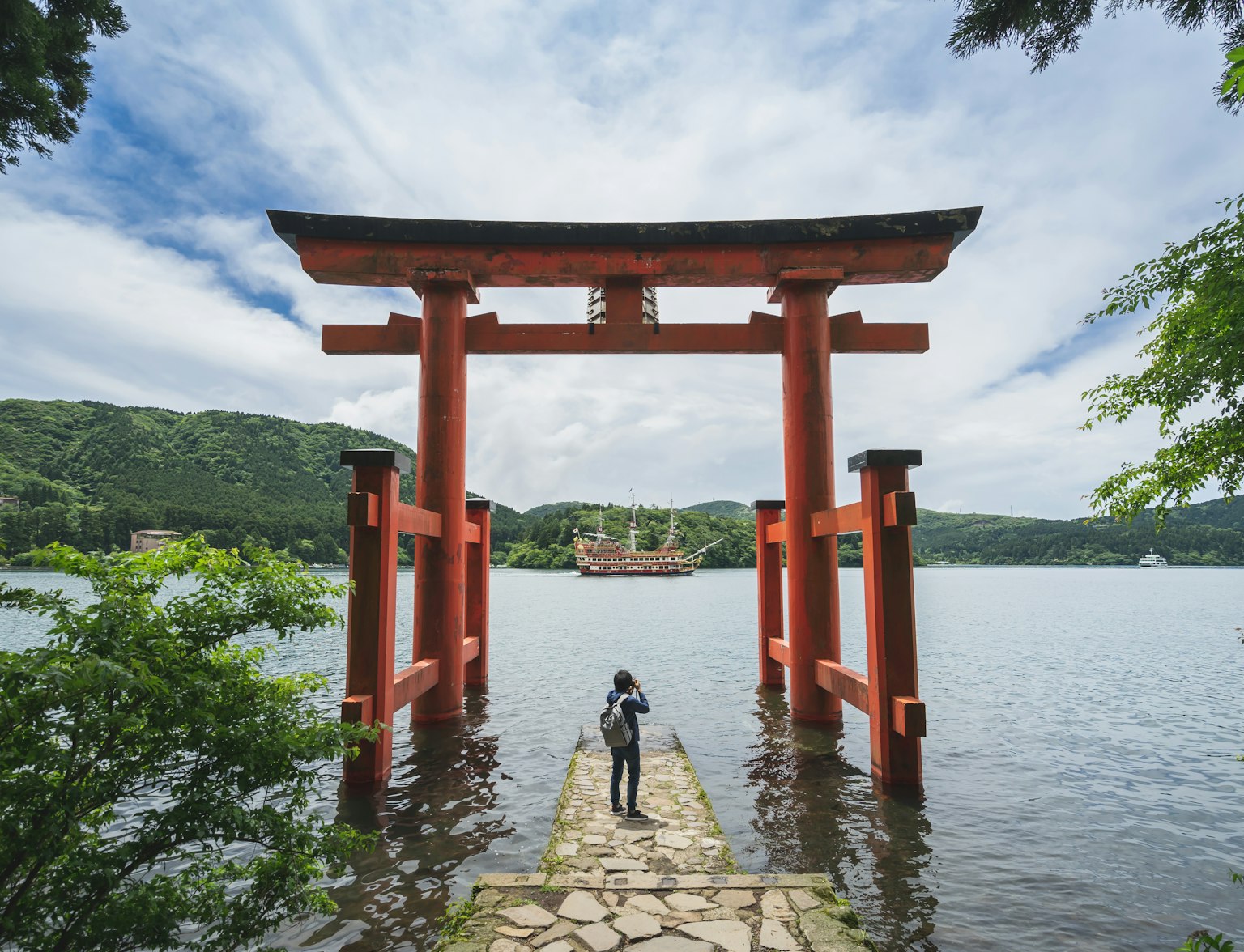
Join our private motorcycle tour from Tokyo to Mt. Fuji and Hakone.
The Hakone Open-Air Museum combines outdoor sculpture exhibitions with natural hot spring foot baths, allowing visitors to soak while appreciating art. Multiple onsen facilities throughout the region offer day-use options for visitors not staying overnight.
Curious what a full day in Hakone could look like? Here’s a simple guide to spending a day in Hakone with plenty of relaxing stops and great views.

Travel Time: 45 minutes from Ikebukuro
Best Train Route: JR Saikyo Line to Kawagoe
Cost: ¥470 one way
Known as "Little Edo," Kawagoe preserves the atmosphere of Tokyo during the Edo period (1603-1868) through its intact merchant district. The clay-walled warehouse buildings (kurazukuri) along the main street survived the Great Fire of 1893 and now house traditional craft shops, restaurants, and museums.
The iconic Toki no Kane (Time Bell Tower) has announced the time for over 400 years, though the current structure dates to 1893. This symbol of Kawagoe continues its timekeeping tradition, ringing four times daily. Nearby Kashiya Yokocho (Candy Lane) specializes in traditional Japanese sweets, offering samples and demonstrations of centuries-old confectionery techniques.
Kawagoe's festivals throughout the year showcase traditional culture. The autumn Kawagoe Festival features elaborate floats and traditional music, while seasonal markets highlight local agricultural products. The preserved architecture provides an authentic backdrop that feels worlds away from modern Tokyo despite the short journey.

Travel Time: 45 minutes from Tokyo Station
Best Train Route: JR Tokaido Shinkansen to Atami
Cost: ¥1,940 one way (Shinkansen)
This historic resort town has attracted visitors seeking hot spring therapy and ocean views for over 1,000 years. Perched on hillsides overlooking Sagami Bay, Atami offers the luxury of shinkansen accessibility with traditional onsen town charm.
Atami Plum Garden becomes a pink and white wonderland during early spring (February-March) when over 400 plum trees bloom simultaneously. The elevated position provides sweeping bay views framed by delicate blossoms. Even outside plum season, the gardens offer peaceful walks and seasonal flower displays.
The town's numerous day-use onsen facilities welcome visitors not staying in traditional ryokan accommodations. Many hot springs feature outdoor baths (rotenburo) with ocean views, combining therapeutic mineral waters with scenic relaxation. The hillside location means many facilities offer terraced hot spring experiences with panoramic coastal vistas.

Travel Time: 25-30 minutes from Tokyo Station
Best Train Route: JR Tokaido Line to Yokohama
Cost: ¥290 one way
Japan's second-largest city offers international flair just south of Tokyo. As one of the first ports opened to foreign trade in 1859, Yokohama developed a unique blend of Japanese and Western influences visible throughout the city today.
Chinatown, the largest in Japan, serves authentic cuisine in atmospheric narrow streets lined with ornate gates and traditional architecture. Over 200 restaurants offer everything from dim sum to Peking duck, while shops sell Chinese teas, herbs, and crafts.
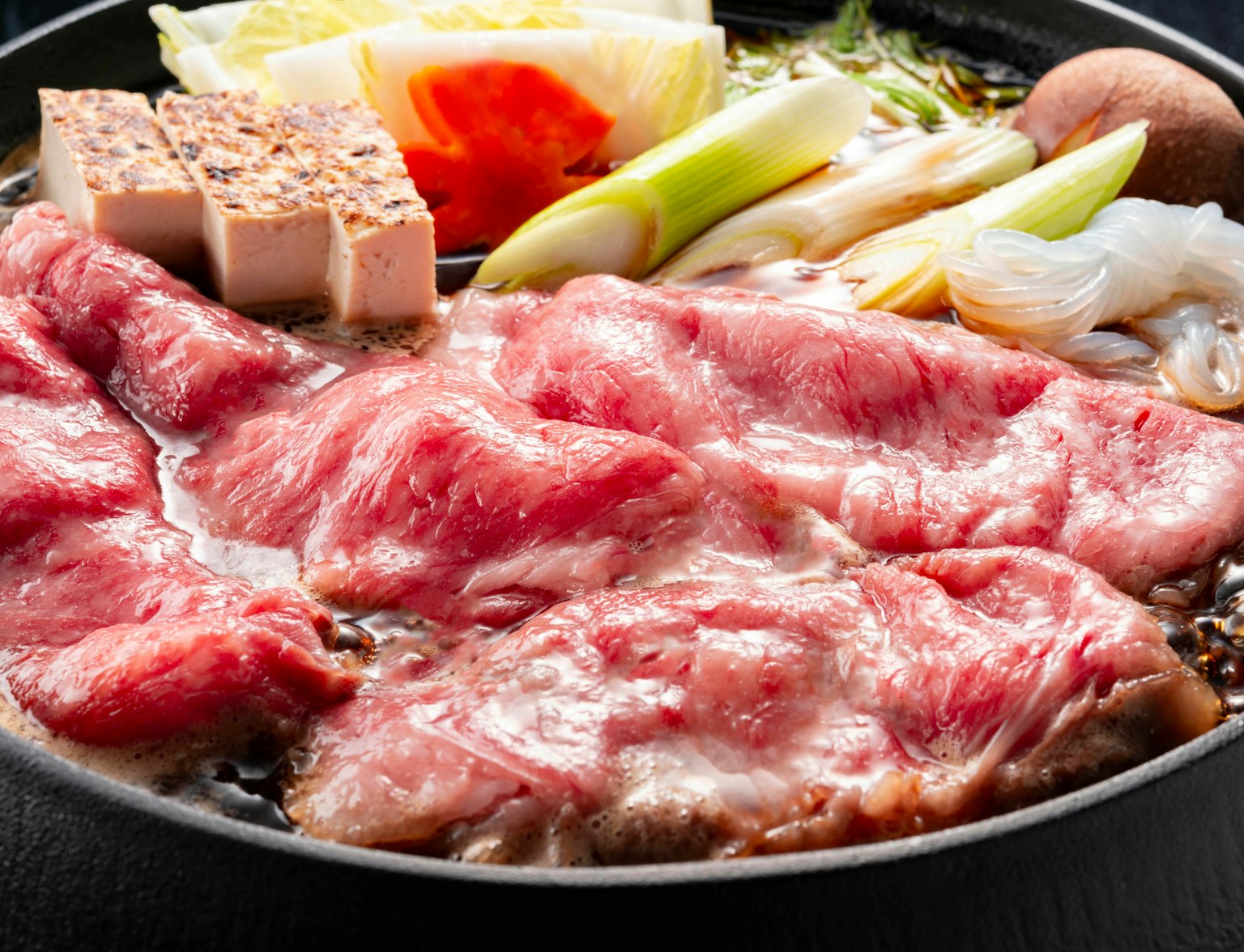
Embark on a 4-hour culinary adventure in Yokohama, exploring its rich food culture with a local guide.
The historic Red Brick Warehouse district combines preserved Meiji-era architecture with modern shopping, dining, and entertainment. The waterfront location provides harbor views and hosts seasonal events including beer gardens, Christmas markets, and cultural festivals. Cosmo World amusement park's giant Ferris wheel creates a romantic backdrop for evening strolls along the bay.
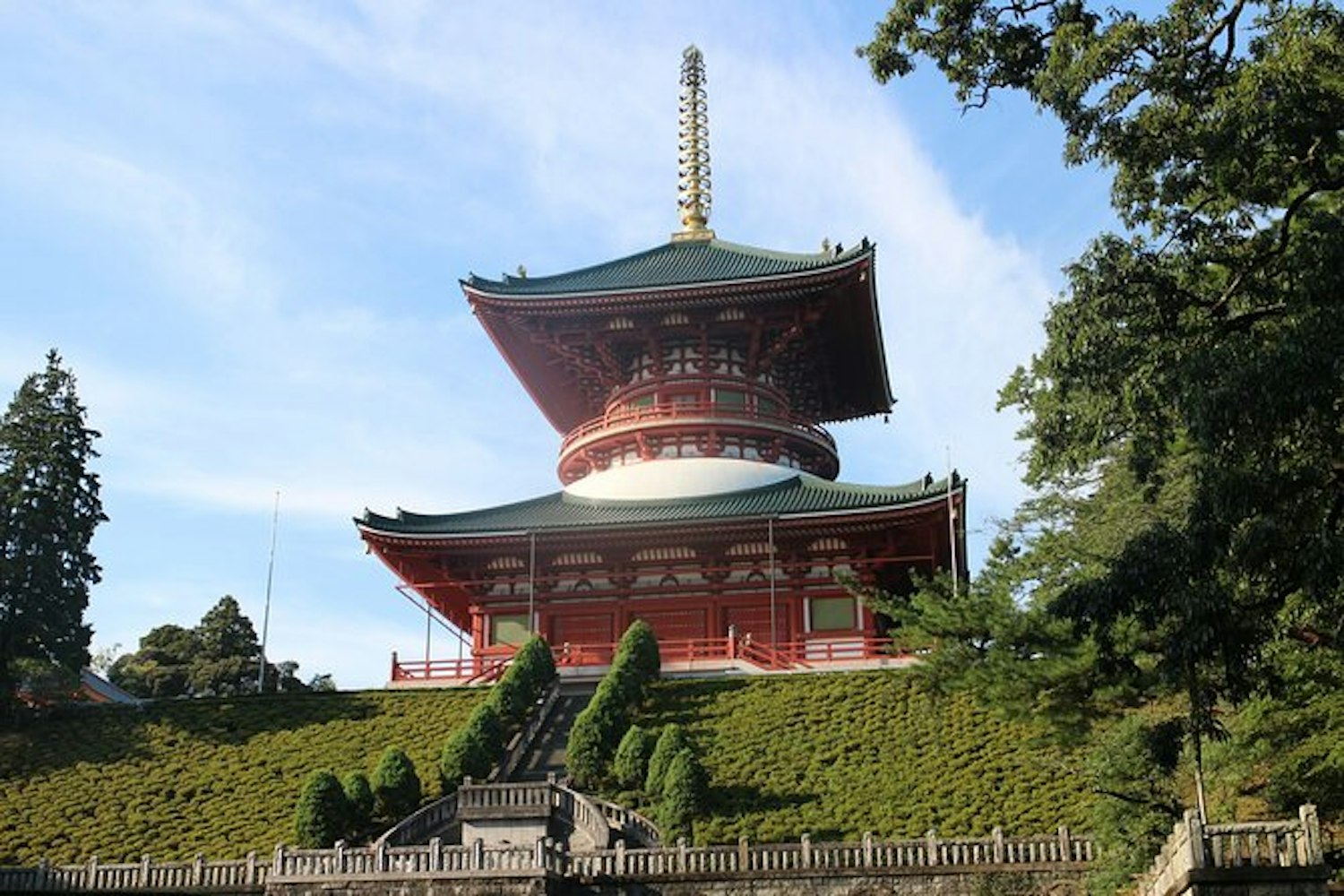
Travel Time: 60 minutes from Tokyo Station
Best Train Route: JR Narita Express or Keisei Skyliner
Cost: ¥1,340 (Narita Express) or ¥1,270 (Skyliner)
Most international visitors pass through Narita only for airport connections, missing the historic temple town that gives the area its name. Narita-san Shinshoji Temple, founded over 1,000 years ago, ranks among Japan's most important Buddhist sites and attracts millions of pilgrims annually.
The temple complex features multiple halls, pagodas, and gardens spread across extensive grounds. The main hall houses a sacred statue of Fudo Myoo, while the three-story pagoda provides architectural photography opportunities. Traditional gardens surrounding the buildings offer seasonal beauty from cherry blossoms to autumn maple leaves.
Narita's traditional shopping street (Omotesando) leading to the temple preserves old-world atmosphere through wooden storefronts and traditional crafts. Unagi (eel) restaurants line the street, serving this local specialty in traditional preparation methods passed down through generations.
These easily accessible destinations prove that you don't need to venture far from Tokyo to experience Japan's incredible diversity. Each location offers unique perspectives on Japanese culture, from ancient spiritual traditions to natural beauty and artistic heritage.
Plan ahead, embrace the journey, and discover how much of Japan you can experience within just an hour's train ride from the world's largest metropolitan area.
